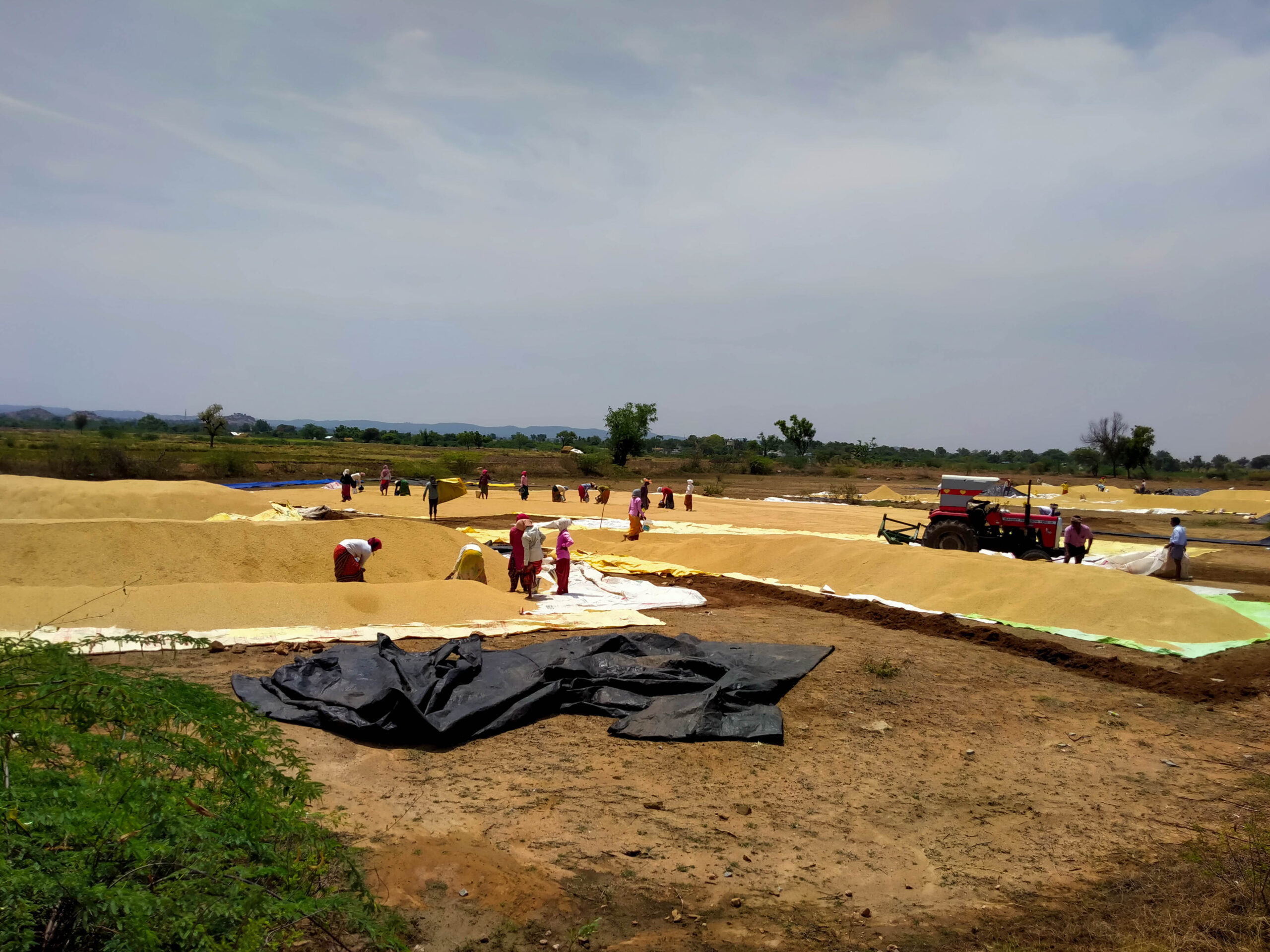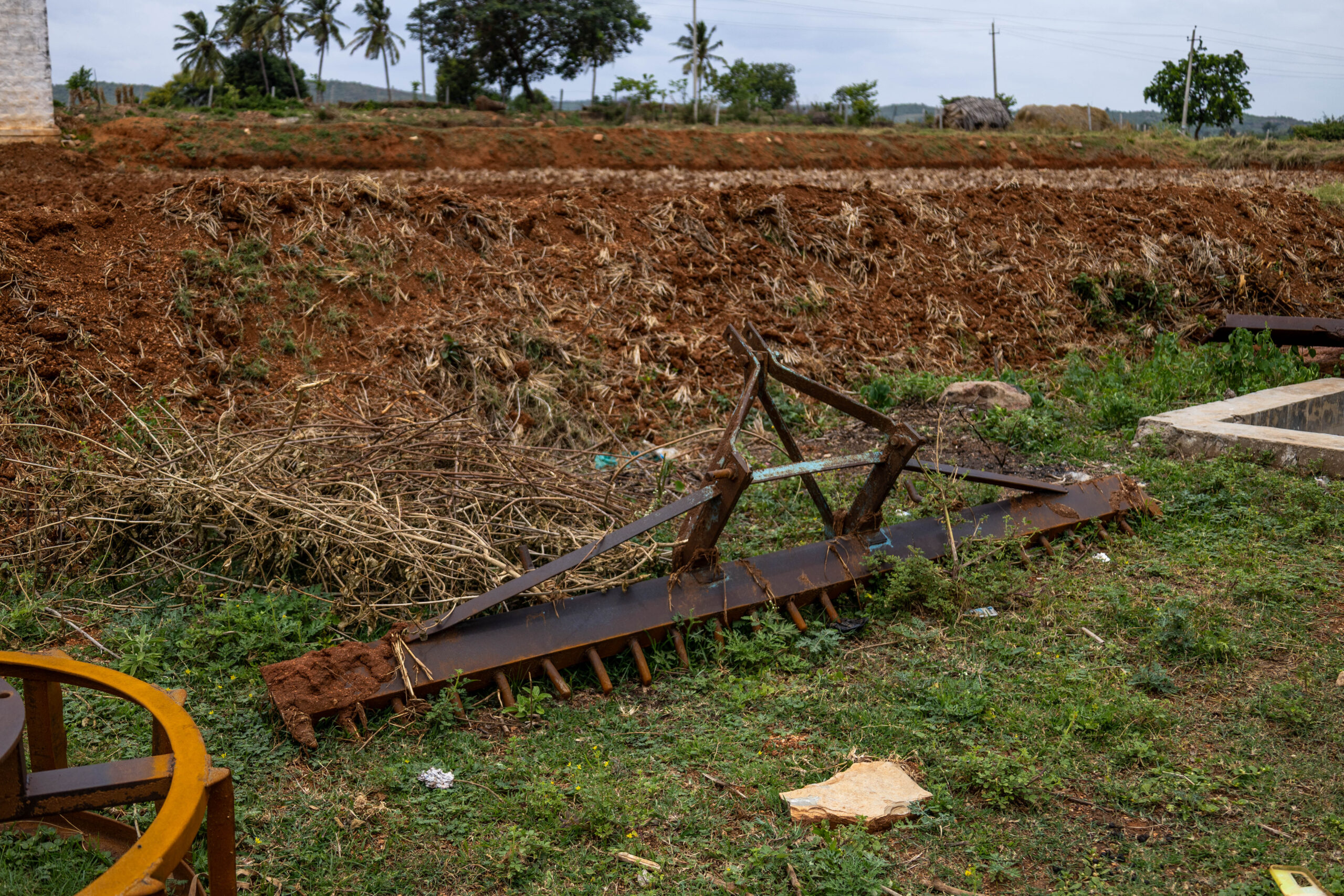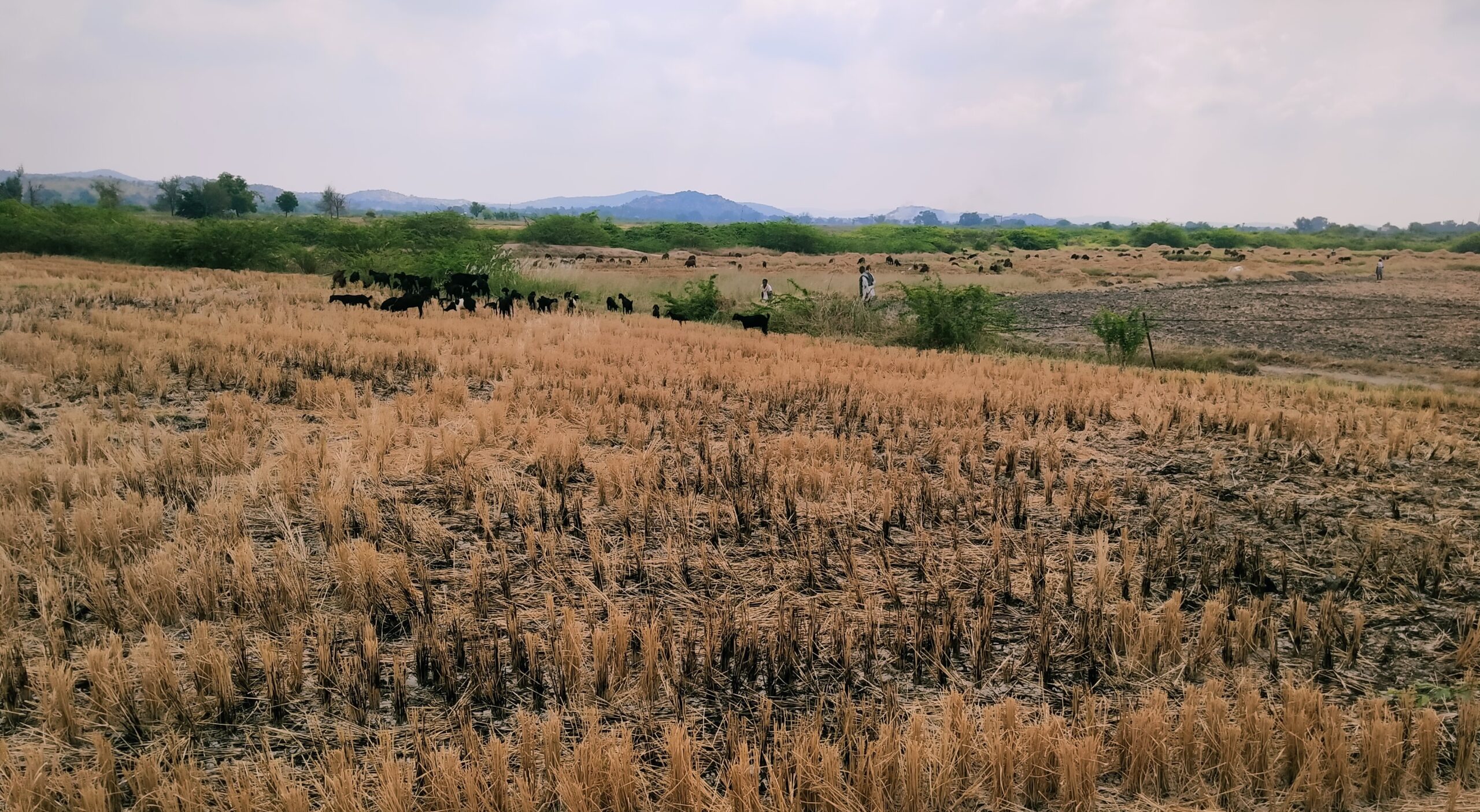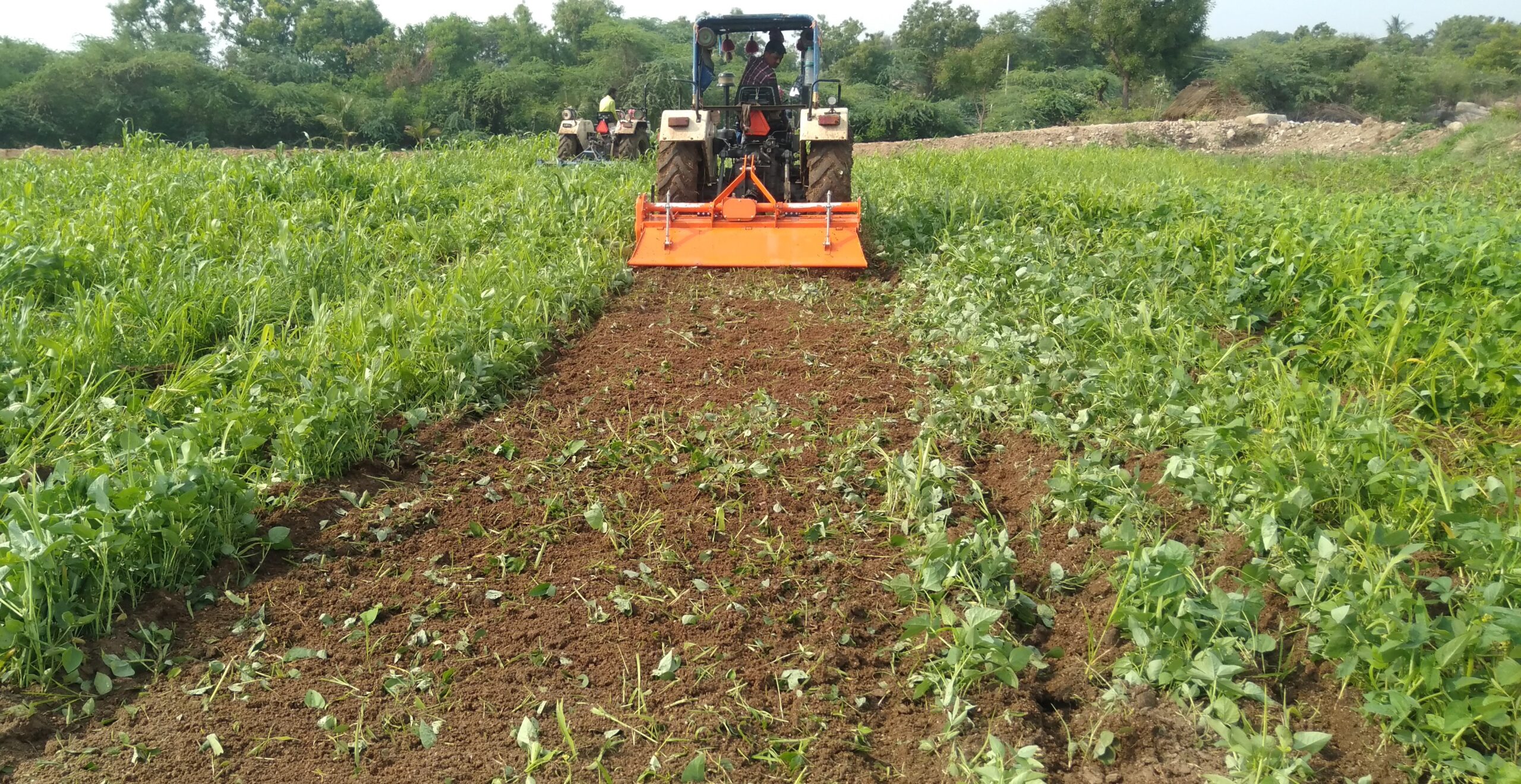Unpacking the Gender Gap in India’s Agricultural Tech Revolution
Photo credit: Nabina Chakraborty
Drones spray agricultural fields with precision, powerful tractors till the land with efficiency, and combine harvesters bring speed into action, replacing manual labour. While the debate of mechanisation versus manual labour exists, the real question we must be asking is – who is this technology really helping, and to what extent? Is this empowerment – so often evoked in policy language – equally accessible to every farmer, or is it merely reinforcing divides that have long haunted rural India?
The government’s Sub-Mission on Agricultural Mechanisation (SMAM), a part of the larger National Mission on Agricultural Extension and Technology (NMAET), and several other state-led programmes have made machinery more affordable than ever, offering subsidies of up to 50% for everything from tractors to paddy transplanters. These efforts have been largely towards increasing the reach and use of machinery in agriculture, especially in regions where the uptake is low. No doubt, there has been a measurable rise in machinery adoption – for instance, the number of tractors sold in India grew from just under 30,000 in 1961 to more than half a million sold annually by 2019 (Deekshithulu et al., 2024). Custom hiring centres (CHCs)—aimed at offering machinery on rent instead of having to purchase them—further spread machinery to smallholder farmers who would otherwise fall out of the purview of mechanisation.
As agricultural technology advances and gains momentum, policy documents increasingly include words like ‘empowerment,’ ‘inclusivity,’ and ‘gender mainstreaming.’ But are these concepts truly translating to practice?

The government’s Sub-Mission on Agricultural Mechanisation (SMAM) has made machinery more affordable than ever
Photo credit: Nabina Chakraborty
Recent research urges caution. A landmark study by Afridi, Bishnu, and Mahajan (2022) used district-level data from 1999 to 2011 to examine what happened when mechanised tilling, driven by rising tractor use, dominated India’s villages. Their findings are striking: farm mechanisation caused a 22% drop in women’s agricultural labour, but only a minor reduction for men. Mechanisation most strongly replaced labour-intensive work like weeding and transplanting, which were most often assigned to women. Despite this, women did not get the opportunity to move into equipment operation jobs; these new roles were typically reserved for men. Further, women did not gain opportunities created by mechanisation, such as better working conditions, higher wages, etc. In reality, the policy’s promise of empowerment largely bypassed them (Afridi et al., 2022; Afridi et al., 2020, SSRN).
Subsidies Alone Can’t Fix Deep-rooted Inequalities
Policy is often seen as a tool to create or establish a level playing field through fair rules and equal opportunities for all involved. Advocates of agricultural mechanisation policies often argue that subsidies and CHCs are designed specifically towards this end. By lowering costs and expanding access, these programmes are supposed to help smallholder farmers, including women, benefit from new technologies. However, evidence suggests that subsidies alone cannot overcome structural exclusions. They fail to address systemic factors – social, economic, cultural, and political – that continue to marginalise women in the agricultural sector.
Let’s look at the SMAM scheme for instance – the guidelines have been progressively updated to increase incentives for women to engage with and adopt agricultural technology. Earlier, there was an additional 10% extra subsidy for women buying eligible agriculture equipment. Newer revisions have increased this to 50%, with the subsidies now applicable to for women, small and marginal farmers, and SC/ST farmers on specific types of agriculture equipment. With men receiving a 40% subsidy on the same equipment, this means that women continue to receive an additional 10% subsidy. Several state-led programmes have also made equipment more affordable than ever, offering subsidies of up to 50% for everything from tractors to paddy transplanters.
While the intent and target groups of these schemes are all well, what they fail to do is address the deeper structural barriers that prevent these groups from meaningfully accessing its benefits. Land ownership patterns, restrictive inheritance laws, lack of collateral for credit, limited mobility, and entrenched gender norms all combine to exclude women and marginalised communities from qualifying for, or applying to such subsidies.

While the SMAM scheme provides additional subsidies for women, small and marginal farmers, and SC/ST farmers,
it fails to address deeper structural barriers | Photo credit: Nabina Chakraborty
The eligibility and documentation requirements create barriers that exclude the very groups that the provisions are made for. Women farmers are required to apply either as individuals, or through self-help groups (SHG), cooperatives, or farmer producer organisations (FPO), and submit copies of their Aadhaar, photos, bank details, additional IDs, and most importantly, a record of rights (RoR) to prove land ownership or cultivation. Caste certificates and mobile numbers are also mandatory.
In reality, most women do not hold land titles in their own names, lack access to formal banking, and face difficulties with digital verification. As a result, a majority of women farmers are filtered out of the scheme. Instead of dismantling inequities, SMAM risks reproducing them, allowing better-resourced farmers to capture benefits while those at the bottom of the barrel remain excluded.
Even when women are listed as farmers, the ergonomic realities set by machine makers persist: tractors, power tillers, and harvesters on offer are rarely designed for female physiques, making operation uncomfortable or unsafe (Deekshithulu et al., 2024). Then, there’s the issue of social stigma. In pilot projects introducing mechanised rice planters in Bihar, women who tried to take up equipment operation initially faced “ridicule and disbelief.” Only with intensive training, community outreach, and institutional support did that resistance begin to thaw out.
On paper, this looks like an inclusive revolution. Machines reduce drudgery, speed up farm work, and are meant to free farmers, particularly women, from the harshest forms of manual labour. Reality, as we know, is far from this. In short, subsidies are an essential step but are not sufficient. To truly foster inclusivity and farmer well-being, we need to address gaps in eligibility criteria, training access, and the design of policies themselves. Without these critical improvements, the most well-intentioned policies and programmes will fall flat, and short of their full potential.
What Can Gender-Sensitive Mechanisation Policies Look Like?
If India’s mechanisation drive truly strives to address the glaring gaps in agricultural technology, our focus will have to be expanded to implementing a series of shifts rather than one magic bullet.
Policies around agriculture mechanisation often hinge on land ownership as a key eligibility requirement. Instead of tying access to land titles, the policies could create provisions that include women and other marginalised farmers even without the ownership of land. While land rights reforms are necessary long-term structural changes, immediate steps could include removing land ownership as an eligibility criterion for mechanisation support to enterprises and farmer groups. This would allow women to participate as entrepreneurs, machine operators, or members of groups, without being limited by land documents they rarely possess. By prioritising entrepreneurship over land ownership, policies can enable a broader range of farmers – particularly women – to seize and leverage opportunities in agricultural mechanisation.
Gender-responsive budgeting is another critical area for mechanisation to be truly inclusive. By allocating specific budgets for women farmers under mechanisation programmes, and tracking utilisation transparently, policymakers can ensure that women farmers have access to the necessary financial support for adopting agriculture technologies. Machine manufacturers must be incentivised to create equipment suited to women’s physique, making it easier and safer for them to operate. Further, machine manufacturers must also prioritise involving women in the design process, to create, test, and offer suggestions that can make equipment accessible to women.
Further, policies must include targeted skilling programmes for women, that are designed to build their capacities not just as labourers, but as machine operators, technicians, and entrepreneurs in mechanised services. This can be extended to include marginalised farmers too, and ensure that they are able to thrive in the mechanisation space.
Finally, policies must account for the social stigma that is largely prevalent in agricultural mechanisation. Many communities continue to view it as ‘culturally inappropriate’ for women to operate machines or take up entrepreneurial roles typically seen as a ‘man’s role.’ Policymakers must, thus, prioritise community outreach, demonstration projects, and institutional support that are vital to challenge cultural taboos around women in the agricultural space.
Who Uses Technology and Who Doesn’t Shape Progress
India’s technology revolution in the field of agriculture is celebrated for the machine’s replacement of drudgery, for innovations increasing efficiency, and subsidies making technology affordable. But behind this celebration lies the harder truth that lies without acknowledgement: the question of access. This brings us back to the question we began with – who is this technology really helping, and to what extent?
Evidence shows that gaps within policy documents help men far more than women, reinforcing patriarchal divides in ownership, labour, and control. This creates barriers that prevent women from even accessing the scheme, let alone benefiting from it.

Machines reduce drudgery, speed up farm work, and are meant to free farmers, particularly women, from the harshest forms of manual labour
Photo credit: Nanditha Gogate
For the revolution to be truly transformative and inclusive, it must place women at its centre – not as passive recipients but as active participants, operators, and decision-makers. That means rewriting entry requirements, reshaping training, and rethinking social norms.
So, as drones fly in the sky and smart tractors roll on the land, let’s keep asking the question of who India’s agricultural technology revolution really is for. For the revolution to benefit all, it must centre the realities of all Indian farmers, not just a few.
The revolution, then, is not just about creating these machines; it is about who gets to use them, and who gets left behind.
Acknowledgements
This work was funded by UK aid from the UK government and by the International Development Research Centre, Ottawa, Canada as part of the Climate Adaptation and Resilience (CLARE) research programme. The views expressed herein do not necessarily represent those of the UK government, IDRC or its Board of Governors.
About CLARE
CLARE is a UK-Canada framework research programme on Climate Adaptation and Resilience, aiming to enable socially inclusive and sustainable action to build resilience to climate change and natural hazards. CLARE is an initiative jointly designed and run by the UK Foreign, Commonwealth and Development Office and Canada’s International Development Research Centre. CLARE is primarily funded by UK aid from the UK government, along with the International Development Research Centre, Canada.
About CLARITY
Climate Adaptation and Resilience in Tropical Drylands (CLARITY), a research project under CLARE, is building equitable, sustainable, and climate-resilient development pathways in tropical drylands. This Global South-led project will result in the creation of long-term assets (data and tools) and capacities to achieve transformational change.
Authored by Parvathy M Prasad, Navitha Varsha
Edited by Sahana Srinath
Published by Nanditha Gogate
Follow us and stay updated about our work:






